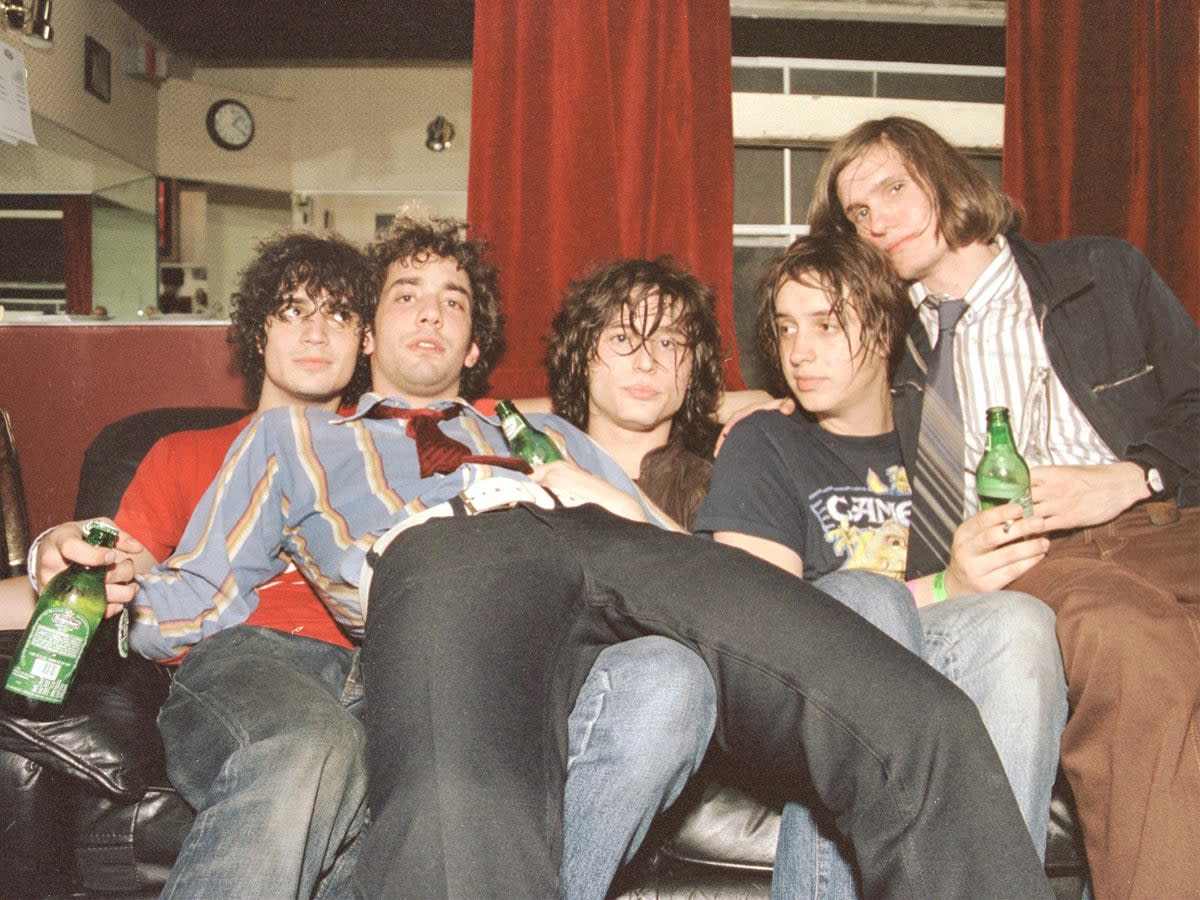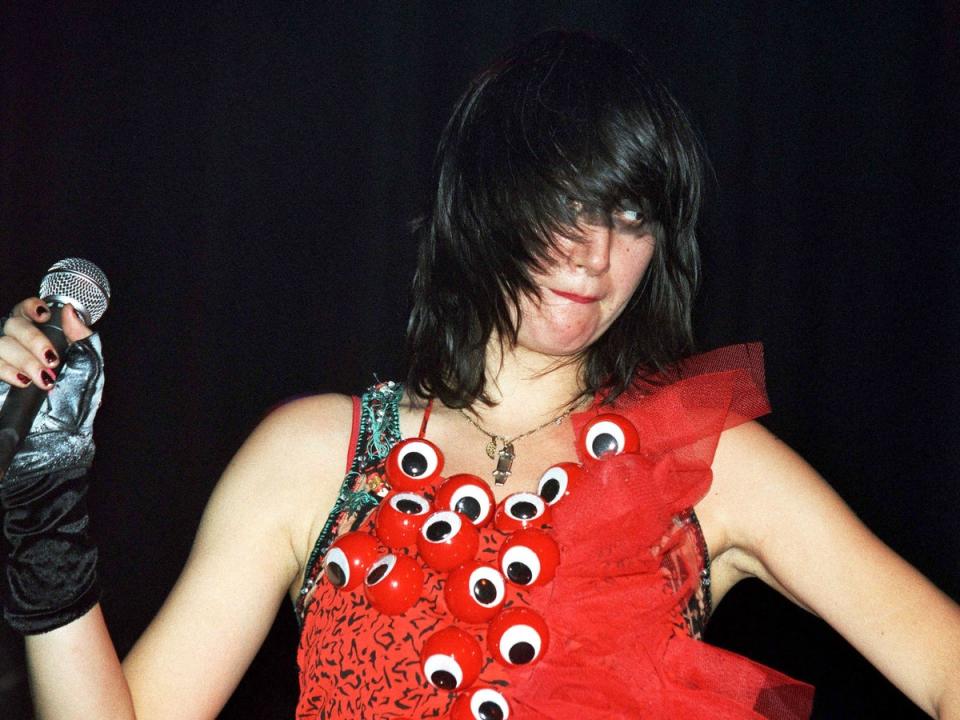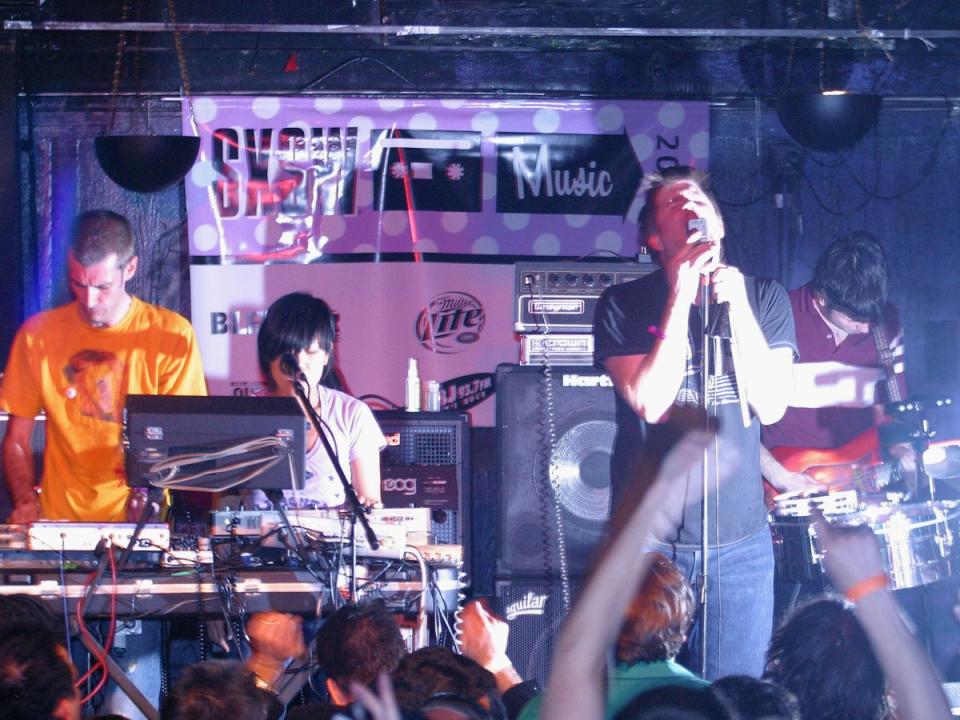‘It could never happen again’: Meet Me in the Bathroom and the birth of New York’s last great indie scene

It’s the turn of the century. New York’s music scene is flatlining. Enter The Strokes, all surly insouciance, torn denim and tattered Converse. Theirs is an electrifying din; mixing distorted vocals with spindly guitars, it’s the defibrillator that the rock ’n’ roll scene so badly needs. From grimy graffiti-covered toilet stalls in dingy dive bars, these five New Yorkers stumble bleary-eyed out onto the biggest stages on the planet.
In Meet Me in the Bathroom, a new documentary based on journalist Lizzy Goodman’s 2017 book of the same name, directors Dylan Southern and Will Lovelace journey back to this strange and distant land. They return with a treasure trove of grainy archive footage capturing the creative upheaval that produced era-defining bands, including Yeah Yeah Yeahs, LCD Soundsystem, Interpol, TV on the Radio, and The Moldy Peaches. “Those bands built a scene in a really DIY way, without the access to millions of people that the internet gives you, and without this notion of self-promotion that happens on social media,” explains Southern, speaking over video call from London. “We wanted to put it on the screen for people who were there, and also for a new generation of aspiring musicians.”
The film picks up the story in 1999, at a time when the idea that New York could return to its place at the centre of the musical universe seemed far-fetched. Much of the Lower East Side was boarded up, and almost three decades had passed since legendary Manhattan punk club CBGBs had fostered the likes of Television, Patti Smith, Blondie, Talking Heads and the Ramones. “I remember thinking, maybe New York wasn’t the kind of city anymore that produces iconic bands,” Adam Green of The Moldy Peaches says in the film’s archive footage.
Green’s reservations, however, didn’t deter his ramshackle two-piece from building their own joyful, profanity-laden “anti-folk” scene around the Sidewalk Cafe in the East Village. Before long, they were joined by a host of other hard-partying musicians determined to reestablish New York as the home of cool, all the while nodding to their own musical heroes. “The aesthetic of each of the bands in this scene owes a debt to the past,” Southern points out. “New York is almost a mythical city. It acts as a sort of beacon to people, drawing them there to become somebody else. That can’t help but be influenced by what’s been there before.”
By following that beacon, this new crop of musicians became New York icons themselves. The Strokes, with their louche rock ’n’ roll, were the band chiefly responsible for pulling the attention of the world towards the city but, as Meet Me in the Bathroom explores, they were quickly overwhelmed by the sudden rush of fame. There was a moment when it seemed as if every frontman in the world wanted to be Julian Casablancas except Julian Casablancas. In Goodman’s book, an entertaining oral history that was largely transcribed by pre-fame singer-songwriter Maggie Rogers, Casablancas said his dream was to “just be big enough to have a fan base and be able to do it for living. That was the goal, and it wasn’t anything beyond that”.
Southern and Lovelace say Casablancas’s relatively modest ambitions were clearly apparent in the footage they dug up. “You could see it straight away,” says Lovelace. “We were trawling through archives of early interviews and he’s just so uncomfortable. He’s a musician who when he says, ‘It’s all about the music’, I take him at his word. He’s obsessively crafting the music, writing it all including the guitar solos. I think the other stuff came with pressure that he wasn’t prepared for.”
That “other stuff” being, of course, The Stroke’s dizzying ascent to A-list status. In 2002, drummer Fabrizio Moretti met Hollywood royalty Drew Barrymore backstage at Coachella and the pair dated for five years. Even before that, as the band’s debut album, Is This It, was catapulting them to global stardom in 2001, their gang-like camaraderie was coming apart under the glare of the spotlight and amid burgeoning drug habits.
Southern says he and Lovelace had multiple discussions over whether to include the band’s former friend, singer-songwriter Ryan Adams, in the film. In Goodman’s book, guitarist Albert Hammond Jr recalled Casablancas becoming upset about Adams’s presence in their social scene. The frontman alleged that Adams had been providing Hammond with heroin, and threatened to beat him up if he didn’t stop. Adams later denied the accusation that he was in any way responsible for Hammond’s addiction. “He did make himself a part of the Strokes story, very much by design, and he did have an impact on them,” says Southern. “Each band was a character in the film, and if it would have been hard to tell the story [of The Strokes] without him.”

Still, Southern adds, “we knew if we were going to include him, it wasn’t going to be in a favourable light”. They were also conscious of the allegations of sexual misconduct made against Adams by seven women including Phoebe Bridgers and his ex-wife Mandy Moore in 2019. They claim that Adams offered to assist them with their musical careers, then pursued them romantically and retaliated with harassment when they spurned his advances. “We didn’t want to include him in a way that gave him a pass for that,” says Southern. “We were very sensitive to the fact that it was a contentious issue, him appearing in the documentary, but then we thought to omit him would be equally contentious.”
While The Strokes struggled under the pressures of celebrity, Yeah Yeah Yeahs singer Karen O was finding that being the sole prominent woman in the scene put her in a lonely position. At one point in Goodman’s book, she recalls turning to Blondie’s Debbie Harry for advice on being a “girl in a boy’s world”. Harry tells her to “enjoy it while it lasts”. Southern says misogynistic media coverage compounded the issue. “When you find yourself looking through the press, it was a very different time,” he says. “She is objectified and presented in a very two-dimensional way at points. You think of that period and it’s white boys in skinny jeans and Converse, and she was having a very, very different experience. She was pretty much out there on her own.”
You’re in this really interesting period where the world just slips from one mode into another
Dylan Southern
As well as The Strokes and Yeah Yeah Yeahs, Meet Me in the Bathroom offers glimpses of the early days of Interpol, TV on the Radio, The Rapture and Liars. In a sense, the film is a coming-of-age story, or rather a series of coming-of-age stories bound together by shared dreams and a shared city. One such story belongs to James Murphy, even though, as Southern points out, the LCD Soundsystem frontman didn’t come of age until well into his thirties.

Southern and Lovelace were already well-acquainted with LCD Soundsystem’s story, having previously directed Shut Up and Play the Hits, a concert film and documentary about the band’s 2011 farewell show at Madison Square Garden. Here, though, they had the opportunity to reach further back into the musician’s past. For Murphy, his transformative moment arrives when he takes ecstasy for the first time with DFA Records collaborator Tim Goldsworthy. Suddenly, he understands dance music. It makes for one of the film’s most joyous moments, as Murphy realises on the dancefloor that his life will never be the same again. “His trajectory changes,” says Lovelace. “He’s discovering Tim and figuring out what he’s going to make. We were very keen to have that moment in the film.”
While the documentary captures the exhilarating rush of a local scene bursting out of its confines and going global, there’s something melancholy about the fact that the phenomena seem consigned to history. “It could never happen again in the way it happened then,” says Lovelace. “I can’t imagine it, in terms of that type of music being made by similar types of people. It feels sort of unlikely, and that was why it felt like such an interesting thing to make a film about.”
Southern points out that it isn’t just the music business that has changed since then, but the very way we communicate and relate to each other as humans. “In 1999, very few people would have had email or a cell phone. By 2003, everyone’s got both of those things. The speed of technological change is just exponential from that point,” he says. “You’re in this really interesting period where the world just slips from one mode into another.”
‘Meet Me in the Bathroom’ is in cinemas

 Yahoo News
Yahoo News 
